It’s 2 AM, I rest against my backpack and take off my shoes, welcoming the cool sand between my toes. I look up to see a shooting star streak across the night sky, fading into the dark. Lightning flashes in the distance while tiny creatures shimmer a turquoise blue as they roll onto the sand, sparking with each new agitation of the lapping waves. My watch beeps at me, signaling that it is time to begin my next patrol. I stand up, click on my red headlamp and follow the shoreline to the next location.
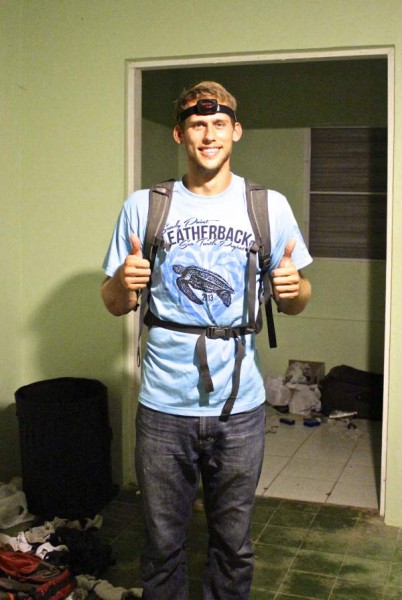
As I make my way, I come across what looks like a tractor tire trail in the sand. I follow it away from the ocean and come across a huge leatherback sea turtle! And when I say huge, I mean massive. I’m pretty sure if they weren’t as slow as molasses on land, they could take me in a fight. The scar on my ankle says it may be irregardless of playing field. I still claim cheap shot (I must mention that the wound came about by purely accidental circumstances, the turtle was not harmed nor did it display any aggressive behavior).
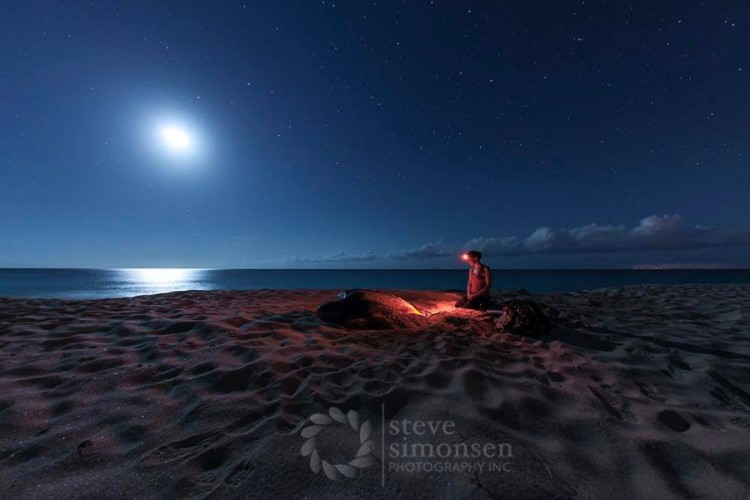
The leatherback sea turtle (Dermochelys coriacea) is an incredible animal, it looks absolutely prehistoric. While the green and hawksbill turtles are a little more skiddish, the leatherbacks could care less that you are there. They were on a mission, to lay their tennis ball sized leathery eggs and get back to the water. Some of the females nested up to 11 times in a 5 month period!
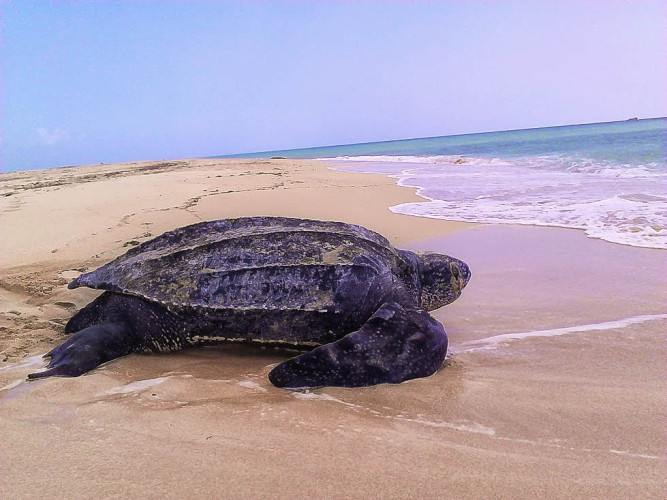
Why, you may ask, were you wandering the beach in the wee hours of the morning searching for sea turtles? Great question. I came to the island of St. Croix to help out on a leatherback sea turtle monitoring project that has been going on for decades. During my stay, I worked with two different organizations: Geographic Consulting and the National Oceanic and Atmospheric Administration (NOAA). Geographic Consulting’s role was to patrol the Sandy Point National Wildlife Refuge at night for nesting leatherback sea turtles. When a turtle was found, she was tagged, measured and the nest location was recorded. Yearly nesting patterns can then be pulled from the data as well as population changes. After approximately 60 days, the hatchlings would emerge which brings in the work I did with NOAA.
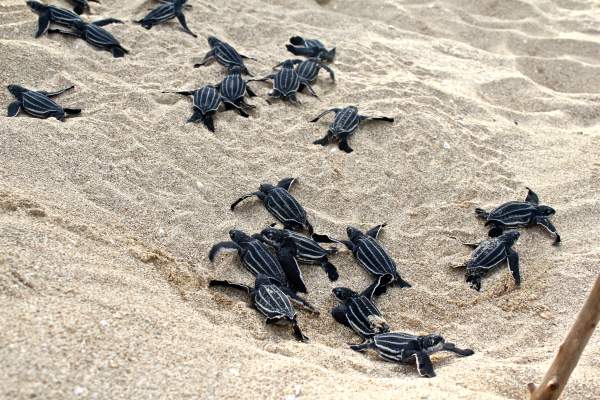
The NOAA crew patrolled the beach in the late afternoon and into the evening for emerging hatchlings. They knew which nests to watch because of the work that the Geographic Consulting group had done. The goal of this project is to genetically tag the hatchlings to learn basic demographic parameters such as length of time to sexual maturity. Small skin biopsies were taken from each hatchling with the hope that it will one day return to the beach as a nesting adult female. The adult turtle would then be identified and matched up with that initial hatchling using the genetic tag. This is the fifth year that Kelly Stewart of NOAA has been working on the project. For more information about Kelly’s work and links to some of her publications, click here.
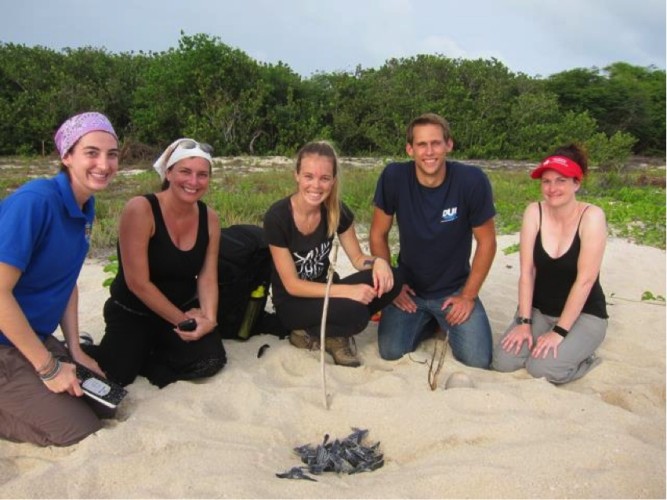
St. Croix was an incredible experience and I need to give a huge thanks to Kelly Stewart, Jennifer Valiulis, Liz, Courtney, Kyle, Jacob and Molly, I had a blast with you all! Subscribe to the blog and follow along on my year of adventure!
Awesome pictures! The Leatherback certainly looks prehistoric. I read on the “all-knowing” Wikipeda that Leatherbacks are the fastest swimming mammal, and maintain much higher body temperatures than the water the swim in. Is all that true? When they aren’t laying eggs on a beach where (geographically) do they spend most of their time?